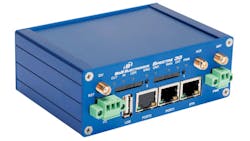The Allies built enormous numbers of Douglas C-47s for the Second World War. Thousands of them are still in service seven decades later. They’re used for everything from firefighting and rescue work to crop dusting and freight services, and their pilots like to say the only replacement for a C-47 is another C-47.
Related Articles
- Understanding The Protocols Behind The Internet Of Things
- The Internet Of Things Grows Chip By Chip
- "Sentrollers" Will Play A Role In The Internet Of Things
The C-47 is easy to fly. It’s easy to maintain. It can take off and land on dirt or grass runways. It can be equipped with skis, floats, or wheels. After three quarters of a century, it’s still an excellent airplane.
Modern aircraft typically fly higher and faster than the C-47. Their onboard avionics will normally be far more advanced. But C-47s still do what they were designed to do, and they do it very well. There’s no reason to doubt that they’ll keep on flying for decades. That’s worth thinking about when we discuss the evolution of the Internet of Things.
This file type includes high resolution graphics and schematics when applicable.
New Networking Frontiers
To be sure, we’ll be connecting new, cutting-edge devices with unprecedented capabilities. We’ll be extending the network edge to include locations that were once unimaginable. We will be able to collect and manage increasingly large and complex data sets and use them in increasingly powerful applications. We’re about to experience an exciting new wave of innovation and invention.
But many of the data networking tools of the present and the past will still be perfectly able to do their jobs. And as a result, we’ll quickly discover that the Internet of Things is going to include more than just the devices of the future. Like a pilot who has installed a new GPS receiver in his trusty old C-47, we’ll find ourselves working backwards to connect equipment that already exists and give it new capabilities.
You can already see the principle at work. In Prague, the capitol and largest city in the Czech Republic, Pražská Teplárenská a.s. operates a district heating system with 265,000 customer connections, 49 heating plants, and 696 km of pipeline. District heating systems like this are hardly new technology. Many are more than a century old. But when heat distribution networks are large enough, they’re surprisingly cost-effective. Rather than seeking to replace them, many operators are actively expanding them.
Pražská Teplárenská a.s. is no exception. It has added heating plants that burn waste rather than fossil fuels. It has installed gamma ash meters that analyze coal in real time, letting operators apply efficient process control measures like coal homogenization. But the company also wanted to add remote monitoring and metering all across the system, and it needed to connect devices that used protocols ranging from Modbus to Ethernet.
Inconveniently, Prague is more than 1000 years old. There are winding streets, irregular property lines, and even some canals. Installing cable connections would have been a nightmare. So Pražská Teplárenská a.s. chose one of the newer communications technologies and deployed cellular routers (Fig. 1).
The cellular routers communicate with the central control using TCP/IP over the cellular telephone network, but they also connect to remote networks and devices using hardware interfaces that are built directly into the routers. They’ll support Wi-Fi, Ethernet, RS232/422/485, and even Modbus. Rather than abandoning its legacy infrastructure, Pražská Teplárenská a.s. used new technology to make it better.
What’s Next?
Pražská Teplárenská a.s isn’t alone. The world’s installed base of legacy systems and equipment is far too large, far too complex, and far too valuable to be casually cast aside. So each time new data networking options have appeared, manufacturers have responded by developing devices that let older equipment remain relevant.
Dual-band wireless serial servers give RS232/422/485 equipment Wi-Fi connections and the ability to choose between 2.4 GHz and 5 GHz, depending upon which frequency provides the more reliable connection under local conditions (Fig. 2). Similar devices give serial devices their own Wi-Fi hotspots, allowing technicians to communicate via laptops, tablets, and smart phones. As Ethernet has moved off the desktop and into the real world, manufacturers have met the challenge, producing Ethernet equipment with industrial specifications and the ability to stand up to harsh, real-world environments. That trend will continue.
New devices will continue to become smaller and smarter, of course. More and more intelligence will be distributed around the network, calling for less and less direct human intervention. Power requirements will continue to drop, just as power harvesting techniques continue to improve. It’s an exciting prospect, and we’re only beginning to grasp the possibilities.
But the Internet of Things will be more than a network of small, smart new devices. It will include older equipment as well. Like an old C-47 waiting its turn in the landing circle above a modern airport, your valuable legacy device will be welcome to keep on doing its job. It will be just one more node among many on the Internet of Things.
Mike Fahrion, director of product management at B&B Electronics, has more than 20 years of design and application experience overseeing M2M connectivity solutions for wireless and wired networks. He also is author of the eConnections newsletter.



